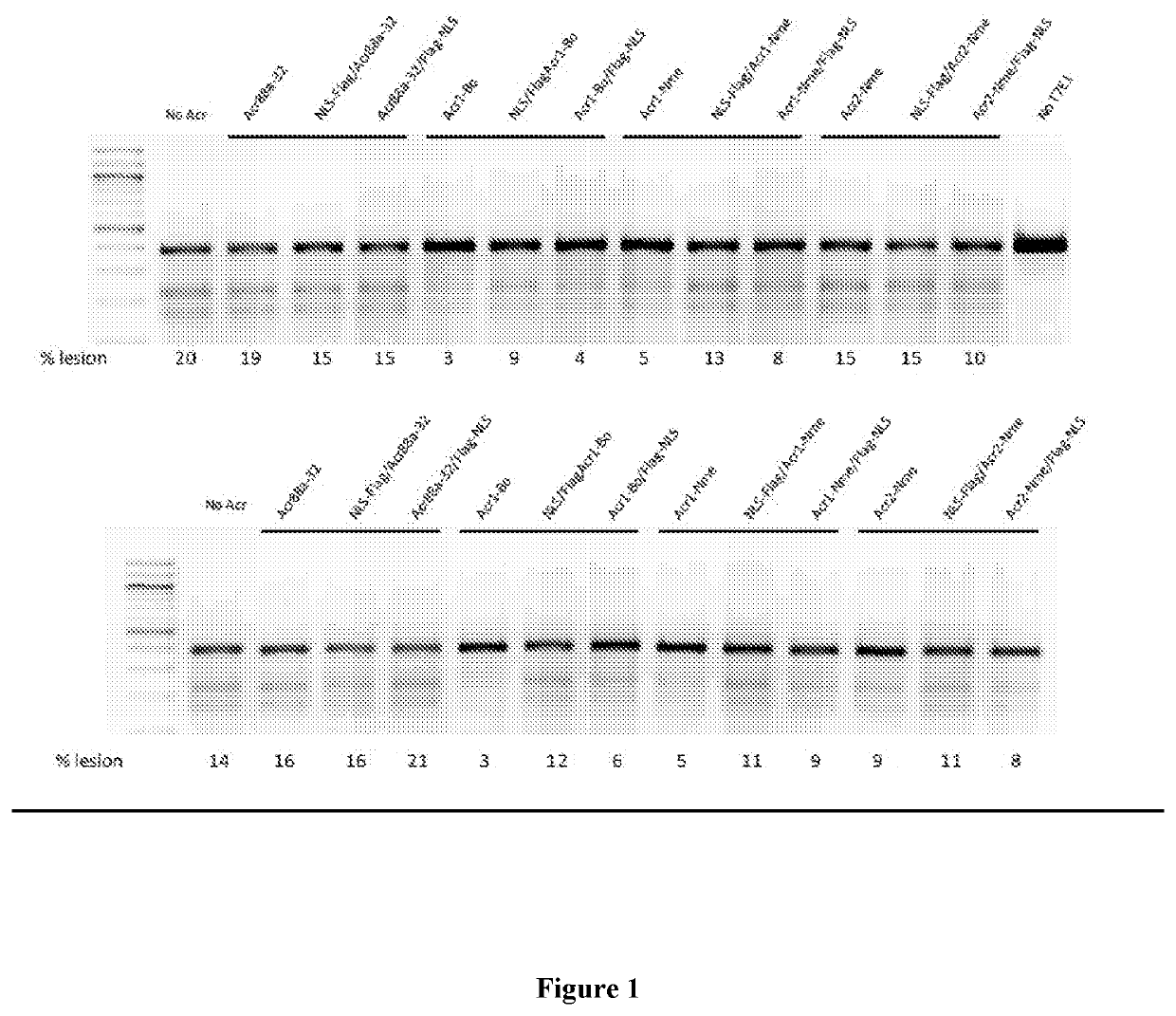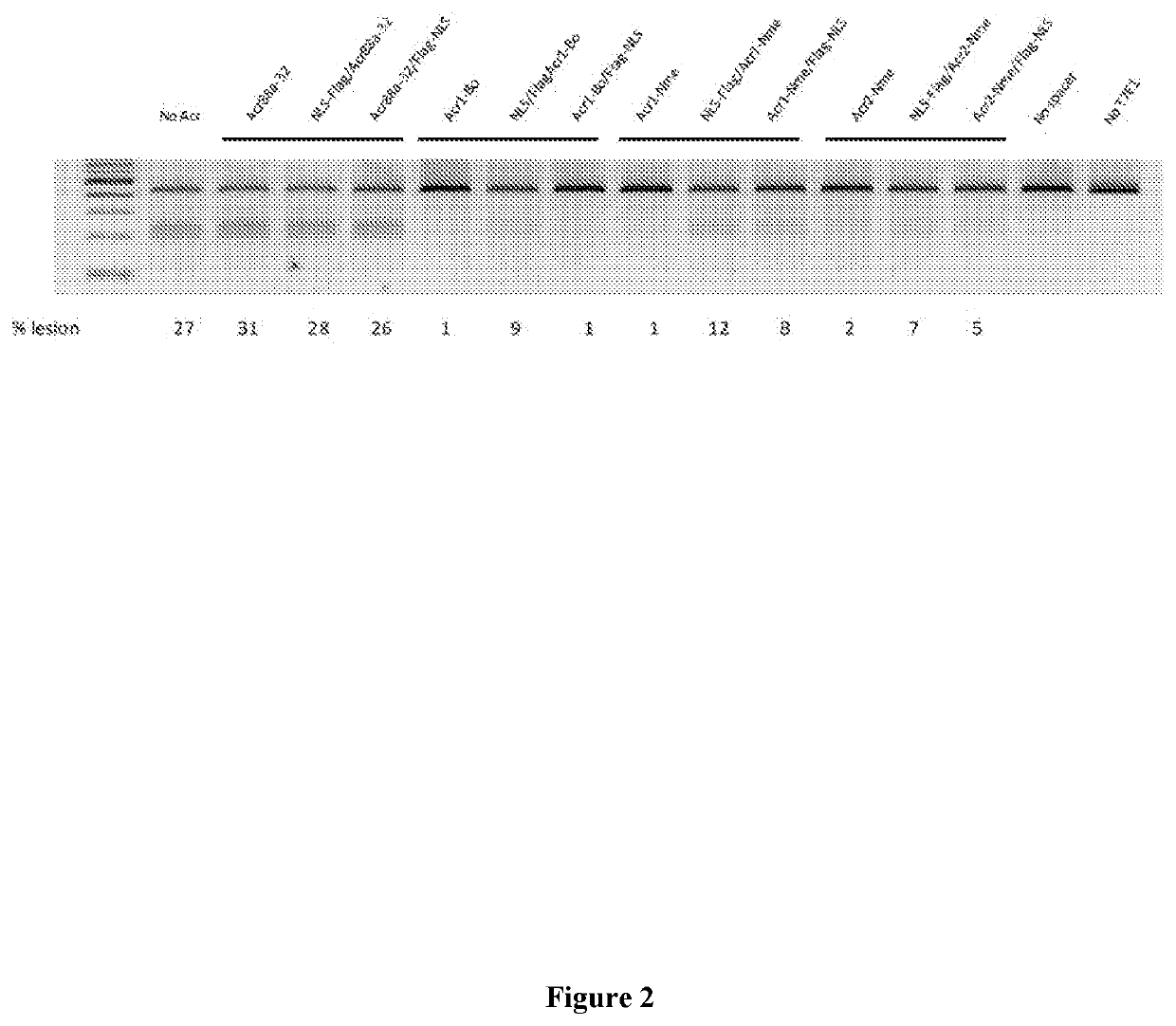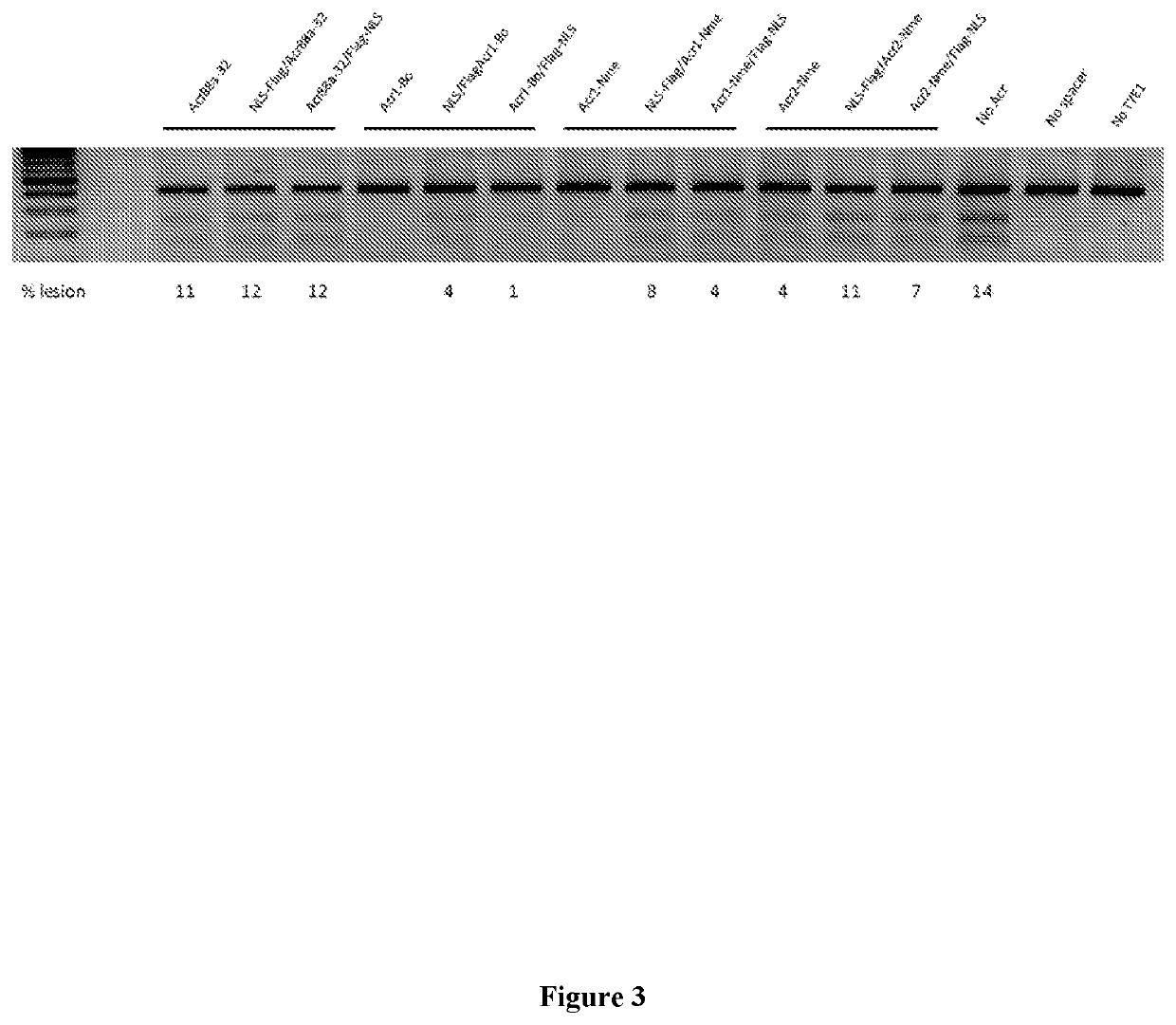Anti-crispr compounds and methods of use
a technology of compound and gene, applied in the field of anti-crispr compounds, can solve the problems of system failure to provide predictable control and robust inhibition, and achieve the effect of reducing the ecological consequences
- Summary
- Abstract
- Description
- Claims
- Application Information
AI Technical Summary
Benefits of technology
Problems solved by technology
Method used
Image
Examples
example i
Construction of Acr Vectors
[0260]Sequences that are found to encode Acr proteins can be ordered from companies that market custom DNA sequence samples, or they can be PCR-amplified from suitable biological DNA samples. They can then be introduced into a vector (including, but not limited to, plasmids and viral vectors) by standard recombinant DNA cloning protocols (e.g. restriction endonuclease digestion and religation, or Gibson assembly). The vector commonly includes promoter sequences suitable for expression within the cells of interest. They also contain other sequences that facilitate gene expression and control [e.g., 5′ and 3′ untranslated regions, poly(A) signals, and transcription terminators]. These vectors can then be introduced into target cells using standard delivery approaches that are well known in the field.
example ii
Screening for Acr Protein Candidates
[0261]Many other acr gene candidates can be identified by their genetic association with aca genes or putative aca genes. Acr open reading frames can be cloned directly from the species of origin, or, alternatively, the gene sequence can be synthesized by a company. There are several ways to screen for Acr activity against the Type II system. 1) test for inhibition of NmeCas9 activity in its native context, i.e. in Neisseria meninigitidis by using a previously described assay measuring the transformation efficiency of CRISPR-Cas9 targeted DNA; 2) test for inhibition of NmeCas9 activity in a heterologous E. coli system whereby NmeCas9 is programmed to target E. coli bacteriophage (e.g. lambda phage); 3) test for inhibition of NmeCas9 activity in human cell culture using the T7E1 assays described herein.
example iii
Acr Administration to Control the Spread of Gene Drives
[0262]Cas9 is currently being contemplated for use in gene drives, which are engineered genetic elements that can spread rapidly through a natural population. If that natural population is an undesirable one, e.g. an insect that transmits a pathogen such as the malaria parasite or dengue virus, then the gene drive could include elements that induce death or sterility to any insect that acquires the gene drive. Although the potential of this approach to control insect-borne diseases is widely recognized, there are many concerns about their safety and the potential for unintended adverse consequences (predictable or not) upon release into the natural environment. Part of this concern arises from the possibility that spread of the gene drive could be difficult or impossible to stop once it is released. A gene drive could be envisioned that uses a Type II-C Cas9 enzyme, e.g. NmeCas9, to support its propagation. Prior to release of t...
PUM
| Property | Measurement | Unit |
|---|---|---|
| sizes | aaaaa | aaaaa |
| pH | aaaaa | aaaaa |
| pH | aaaaa | aaaaa |
Abstract
Description
Claims
Application Information
 Login to View More
Login to View More - R&D
- Intellectual Property
- Life Sciences
- Materials
- Tech Scout
- Unparalleled Data Quality
- Higher Quality Content
- 60% Fewer Hallucinations
Browse by: Latest US Patents, China's latest patents, Technical Efficacy Thesaurus, Application Domain, Technology Topic, Popular Technical Reports.
© 2025 PatSnap. All rights reserved.Legal|Privacy policy|Modern Slavery Act Transparency Statement|Sitemap|About US| Contact US: help@patsnap.com



